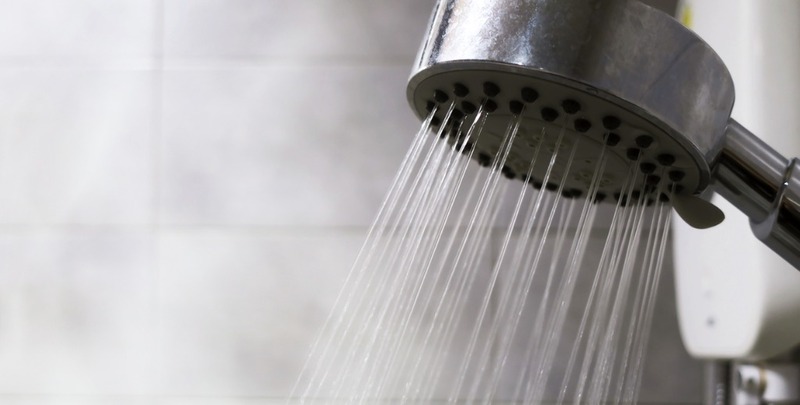
The Differences Between Thermostatic and Tempering Valves
Knowing the differences between thermostatic and tempering valves can be useful, whether you’re a plumbing enthusiast, or just want to understand your home better.
These often-overlooked pieces of hardware each serve a vital role in the installation of a hot water storage system to ensure you and your family are safe from burns every time you turn on the hot water tap.
While their purposes are similar, thermostatic mixers and tempering valves have some distinct differences worth exploring. Join us as we explore how these valves not only ensure your safety but also enhance the efficiency of your hot water supply.
The Function of a Tempering Valve
A tempering valve is a key component in Australian home hot water systems. It plays a pivotal role in ensuring your hot water is safe. Also known as a hot water mixing valve or a mixing tool, they cleverly mix hot water from your hot water system with cold water. It effectively reduces the temperature to a safer level before it reaches your tap. You will have a tempering valve installed to make sure no scalding hot water could harm users.
But why do you need a tempering valve in the first place? Water is stored at 60°C in a storage tank to prevent the growth of dangerous bacteria such as Legionella. However, if hot water was delivered at that temperature it would cause third-degree burns any time you ran the hot water tap. That’s why a tempering valve is used to reduce the hot water to about 50°C.
When You Do and Do Not Need a Tempering Valve
It’s worth noting that not all hot water systems require a hot water tempering valve. For example, tankless continuous flow models do not require one. This is because you are not storing water in a hot water tank. And you’ll likely not need one if your electric or gas hot water system already has a thermostatic mixing valve installed. But more on them later.
If you’re installing replacement hot water systems or a new hot water system as part of a new home build, it is mandatory to have a tempering valve installed in any bathroom.
Signs of a Bad Tempering Valve
Detection of a malfunctioning tempering control valve might prove challenging to an untrained eye.
Signs of a bad hot water tempering valve include:
- Fluctuating water temperature
- A lack of consistent hot water, or
- A complete absence of hot water altogether
Moreover, an observable decrease in water pressure could result from a defective tempering valve. The valve could restrict the flow of hot water to a particular outlet, such as the outlet of a shower or a tap.
The life expectancy of a tempering valve is typically around 5 to 10 years. However, this varies based on the quality of the stored water, water usage and the installation.
If you’re having problems with your hot water tempering valve, make sure you consult with a qualified plumber.

What are Thermostatic Mixing Valves?
Thermostatic mixing valves are the unsung heroes in the world of your hot water unit. These sophisticated devices automatically adjust the mix of cold and hot water to a pre-set temperature.
Unlike tempering valves, they can respond instantly to changes in water flow or temperature. This guarantees a consistent and safe water temperature at all times. This makes them especially valuable in settings where precise temperature control is critical. These include homes with vulnerable residents or healthcare facilities with large capacity systems. These valves help to prevent scalding. They also help in controlling the growth of harmful bacteria like Legionella in your water system.
Tempering Valves vs Thermostatic Mixing Valves
Comparing thermostatic and tempering valves is essential for any homeowner looking to make an informed decision about their hot water system. While both valves regulate water temperature, they operate differently.
Thermostatic valves offer more precise control than tempering valves. They adjust the mix of cold and hot water in real-time to maintain a constant temperature. It makes them ideal for fluctuating water supply conditions. Tempering valves, on the other hand, blend heated water from your hot water system with cold at a fixed ratio, set to a safe temperature, usually around 50 degrees Celsius. Both types comply with Australian standards. However, your choice depends on your specific needs: whether it’s precision or consistent safety you’re after.
Introducing Thermostatic Systems for Hot and Cold Water
A thermostatic system mainly operates based on a thermostatic mixing valve (TMV). It blends hot and cold water to secure a consistent, safe outlet temperature, serving as a top-notch safety feature to prevent scalding.
The TMV responds automatically to pressure or temperature changes in the water supply, adjusting the mix of hot and cold water.
The key part of the valve is a temperature-sensitive element. This element expands or contracts based on the water temperature, influencing the water mix. Therefore, the thermostatic system keeps the balance of hot and cold water, delivering a stable outlet temperature.

What is a Thermostatic Shower?
A thermostatic shower, incorporating a thermostatic mixer, offers the best quality showering solution for those seeking safety and control. Its rock-solid temperature stability, even when other outlets are in use, makes it a favourite pick.
Furthermore, the addition of a thermostatic mixer means these showers swiftly neutralise any harmful bacteria that may breed in stored water. With this, a safer and healthier shower experience is guaranteed.
Debunking the “Thermostatic = Electric” Myth
While the term “thermostatic” might seem like it’s associated with electricity, it’s not. It refers to the ability of the valve to regulate temperature with impressive accuracy.
However, some thermostatic showers or mixers do use electrical components to enhance their performance, but this is not a necessity.
Making the Right Choice for Your Hot Water Needs
While the features of thermostatic mixers and tempering valves diverge to some degree, both are indispensable in regulating water temperature for safety and comfort. The choice between the two often comes down to a user’s preferences and specific needs.
Consulting with a licensed plumber will further guide you in navigating the world of thermostatic mixers and valves and making the best selection.
Remember, whether it is the installation of a new shower or an entire bathroom, it is critical to appreciate the roles these valves play.
After all, even the smallest parts can make the biggest difference in delivering the best quality for your home.
Please note: This information is provided for advice purposes only. Regulations differ from state to state, so please consult your local authorities or an industry professional before proceeding with any work. See our Terms & Conditions here.
Published: 2023-11-07

















